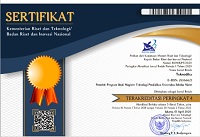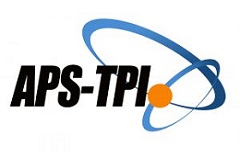The Urgency of Using Speech Generating Devices (SGD) for Social Communication Improvement Therapy for Autistic Children in Schools
Abstract
The main challenge faced by children with autism is difficulty in social communication. Appropriate early intervention is crucial to help autistic children develop their communication skills. One increasingly popular tool in communication intervention for autistic children is Speech Generating Devices (SGD). This study aimed to explore the urgency of using SGD in social communication enhancement therapy for autistic children to improve social interaction and reduce maladaptive behaviour. This study employs a mixed-method research design to explore the urgency of using SGD in treatment to enhance the social communication of autistic children. The sample was taken using proportional random sampling, consisting of 80 teachers for autism and speech therapists in Surakarta. Data collection techniques in this study to explore the urgency of using SGD in therapy to improve the social communication of autistic children were conducted in two ways: through a questionnaire using Google Forms and interviews. The analysis results show that SGD is an essential tool for enhancing the social communication of autistic children, with 66.7% agreeing and 33.3% expressing a neutral stance. The interview results stated that SGD is needed to support autistic social communication. The conclusion drawn from these results indicates that SGD is a crucial element that can be used to improve the communication of autistic children in schools rapidly. The opinions of teachers and speech therapists suggest that the use of SGD can reduce communication challenges in autistic children. This is evident from the questionnaire results filled out by respondents, showing that 95% strongly agree and 5% agree. The use of speech generating devices (SGD) is of high urgency in supporting therapy to enhance the social communication of autistic children in inclusive schools, such as training in social interaction and reducing maladaptive behaviour in autistic children.
Keywords
Full Text:
PDFReferences
American Psychiatric Association, DSM-5 Task Force. (2013). Diagnostic and statistical manual of mental disorders: DSM-5™ (5th ed.). American Psychiatric Publishing, Inc.. https://doi.org/10.1176/appi.books.9780890425596
Aspiranti, K. B., Larwin, K. H., & Schade, B. P. (2018). iPads/tablets and students with autism: A meta-analysis of academic effects. Assistive Technology, 32(1), 23–30. https://doi.org/10.1080/10400435.2018.1463575
BPS. (2022). Disabilitas dalam angka. Jakarta: BPS.
Cabibihan, J. J., Javed, H., Aldosari, M., Frazier, T. W., & Elbashir, H. (2018). Sensing technologies for autism spectrum disorder screening and intervention. Sensors, 18(1), 46.
Chen, P., Wang, B., Hu, Z., Qin, X., Wang, H., Hu, Z., Liu, X., & Li, Y. (2024). The demand for assistive technology, services, and satisfaction self-reports among people with disabilities in China. Disability and rehabilitation. Assistive technology, 1–10. Advance online publication. https://doi.org/10.1080/17483107.2024.2442711
Cooper, K., Smith, L. G. E., & Russell, A. J. (2018). Gender identity in autism: Sex differences in social affiliation with gender groups. Journal of autism and developmental disorders, 48(12), 3995–4006. https://doi.org/10.1007/s10803-018-3590-1
Creswell, J W. (2020). Educational research: Planning, conducting, and evaluating quantitative and qualitative research (4th ed.). Boston, MA: Pearson.
De Luca, R., Leonardi, S., Portaro, S., Le Cause, M., De Domenico, C., Colucci, P.V., et al. (2021). Innovative use of virtual reality in autism spectrum disorder: A case-study. Applied Neuropsychology: Child, 10 (1), 90-100.
Diehl, J. J., Schmitt, L. M., Villano, M., & Crowell, C. R. (2019). The clinical use of robots for individuals with autism spectrum disorders: A critical review. Research in Autism Spectrum Disorders, 6(1), 249-262.
Ganz, J. B., Morin, K. L., Foster, M. J., Vannest, K. J., Genç Tosun, D., Gregori, E. V., & Gerow, S. L. (2017). High-technology augmentative and alternative communication for individuals with intellectual and developmental disabilities and complex communication needs: a meta-analysis. Augmentative and alternative communication (Baltimore, Md. : 1985), 33(4), 224–238. https://doi.org/10.1080/07434618.2017.1373855
Hermawan, A. F., Sari, W. S. M., Pulungan, S. A. N., Homdijah, O. S., Akhlan, R. N. R., Maulina, E., & Rohani, R. S. (2024). Pengembangan Sistem Komunikasi Alternatif dan Augmentatif pada Aplikasi “E-Comm (Electronic Communication)â€. EDUKATIF : JURNAL ILMU PENDIDIKAN, 6(5), 5613–5621. https://doi.org/10.31004/edukatif.v6i5.6999
Holyfield, C., Light, J., Mcnaughton, D., Caron, J., Drager, K., & Pope, L. (2020). Effect of AAC technology with dynamic text on the single-word recognition of adults with intellectual and developmental disabilities. International journal of speech-language pathology, 22(2), 129–140. https://doi.org/10.1080/17549507.2019.1619836
Istanboulian, L., Rose, L., Gorospe, F., Yunusova, Y., & Dale, C. M. (2020). Barriers to and facilitators for the use of augmentative and alternative communication and voice restorative strategies for adults with an advanced airway in the intensive care unit: A scoping review. Journal of critical care, 57, 168–176. https://doi.org/10.1016/j.jcrc.2020.02.015
Kemendikbud. (2022). Data jumlah anak autis di Indonesia. Jakarta: Kemendikbud.
Light, J., McNaughton, D., Beukelman, D., Fager, S. K., Fried-Oken, M., Jakobs, T., & Jakobs, E. (2019). Challenges and opportunities in augmentative and alternative communication: Research and technology development to enhance communication and participation for individuals with complex communication needs. Augmentative and alternative communication (Baltimore, Md.: 1985), 35(1), 1–12. https://doi.org/10.1080/07434618.2018.1556732
Lorah, E. R., Parnell, A., Whitby, P. S., & Hantula, D. (2020). A Systematic review of tablet computers and portable media players as speech generating devices for individuals with autism spectrum disorder. Journal of autism and developmental disorders, 45(12), 3792–3804. https://doi.org/10.1007/s10803-014-2314-4
McNaughton, D., & Light, J. (2018). The iPad and mobile technology revolution: Benefits and challenges for individuals who require augmentative and alternative communication. Augmentative and Alternative Communication, 34(1), 1-12.
Mesa-Gresa P, Gil-Gómez H, Lozano-Quilis J-A, Gil-Gómez J-A. (2018). Effectiveness of virtual reality for children and adolescents with autism spectrum disorder: An evidence-based systematic review. Sensors, 18 (8).
Pennisi, P., Tonacci, A., Tartarisco, G., Billeci, L., Ruta, L., Gangemi, S., & Pioggia, G. (2020). Autism and social robotics: A systematic review. Autism Research, 13(6), 793-805.
Shamsuddin, S., Yussof, H., Ismail, L. I., Mohamed, S., Hanapiah, F. A., & Zahari, N. I. (2021). Humanoid Robot NAO as a Tool in Social Skills Development for Children with Autism: A Preliminary Study. Procedia Engineering, 41, 1446-1452
Smith, J., et al. (2020). Inclusive education for children with autism spectrum disorders: Challenges and strategies. International Journal of Inclusive Education, 24(5), 567-582.
Tager-Flusberg, H., & Kasari, C. (2013). Minimally verbal school-aged children with autism spectrum disorder: the neglected end of the spectrum. Autism research : official journal of the International Society for Autism Research, 6(6), 468–478. https://doi.org/10.1002/aur.1329
Therrien, M. C., Light, J., & Pope, L. (2016). Systematic Review of the Effects of Interventions to Promote Peer Interactions for Children who use Aided AAC. Augmentative and alternative communication (Baltimore, Md. : 1985), 32(2), 81–93. https://doi.org/10.3109/07434618.2016.1146331
Thiemann-Bourque, K., Feldmiller, S., Hoffman, L., & Johner, S. (2018). Incorporating a Peer-Mediated Approach Into Speech-Generating Device Intervention: Effects on Communication of Preschoolers With Autism Spectrum Disorder. Journal of speech, language, and hearing research : JSLHR, 61(8), 2045–2061. https://doi.org/10.1044/2018_JSLHR-L-17-0424
Van Der Meer, L. A. J., & Rispoli, M. (2010). Communication interventions involving speech-generating devices for children with autism: A review of the literature. In Developmental Neurorehabilitation (Vol. 13, Issue 4, pp. 294–306). https://doi.org/10.3109/17518421003671494Refbacks
- There are currently no refbacks.





.png)













